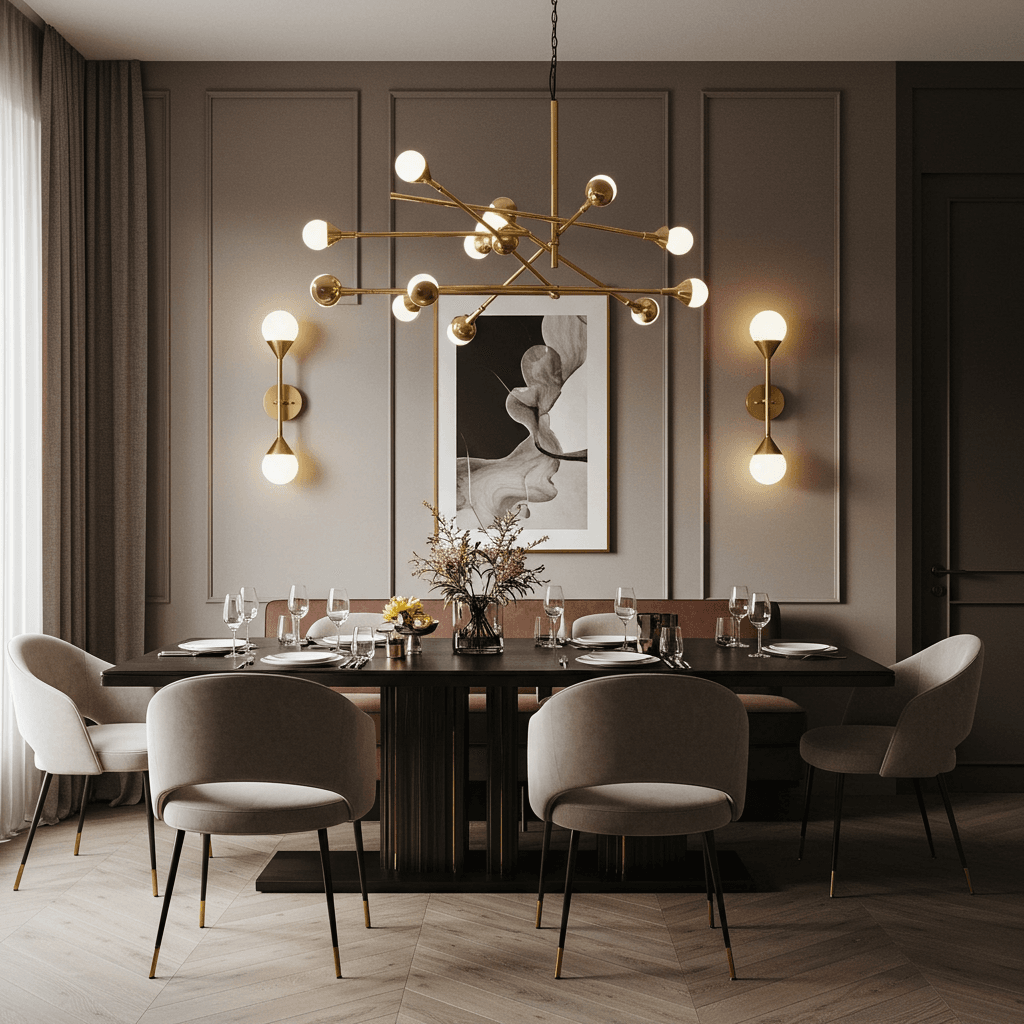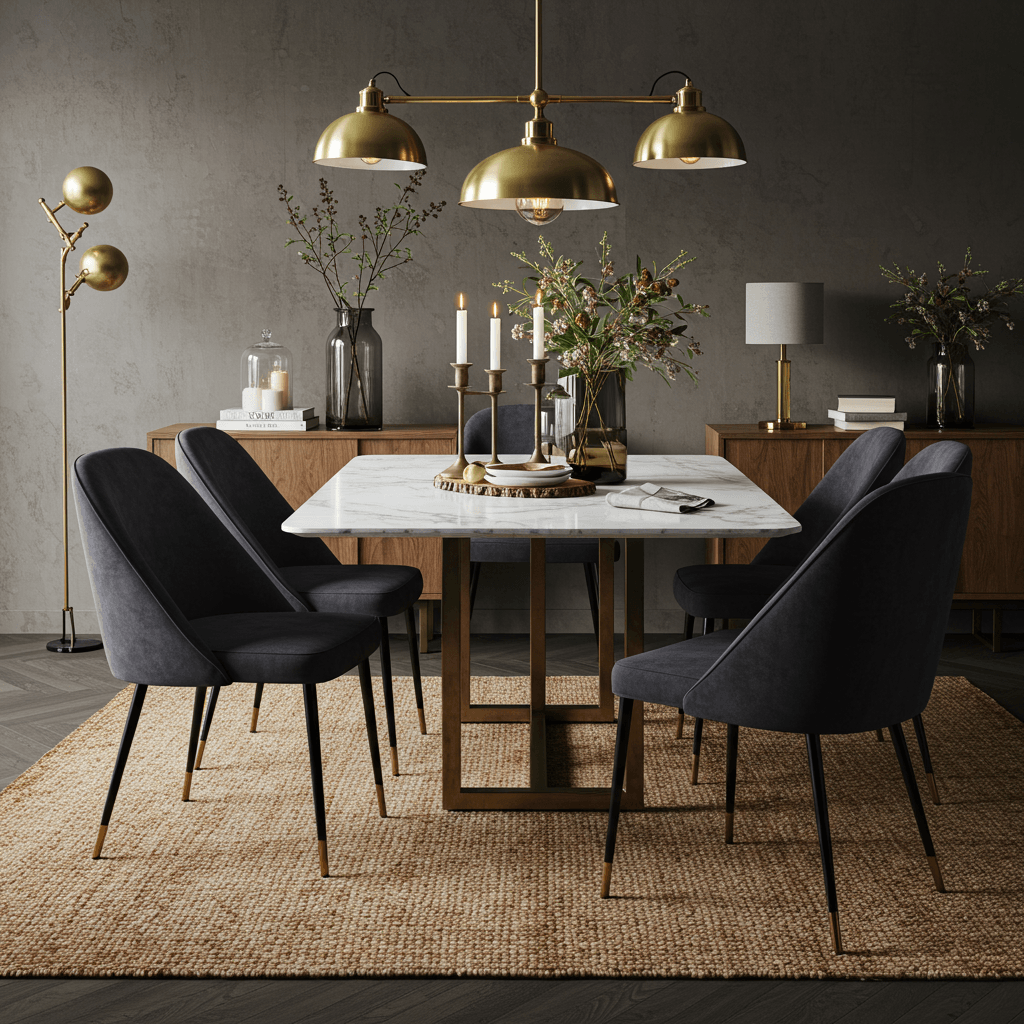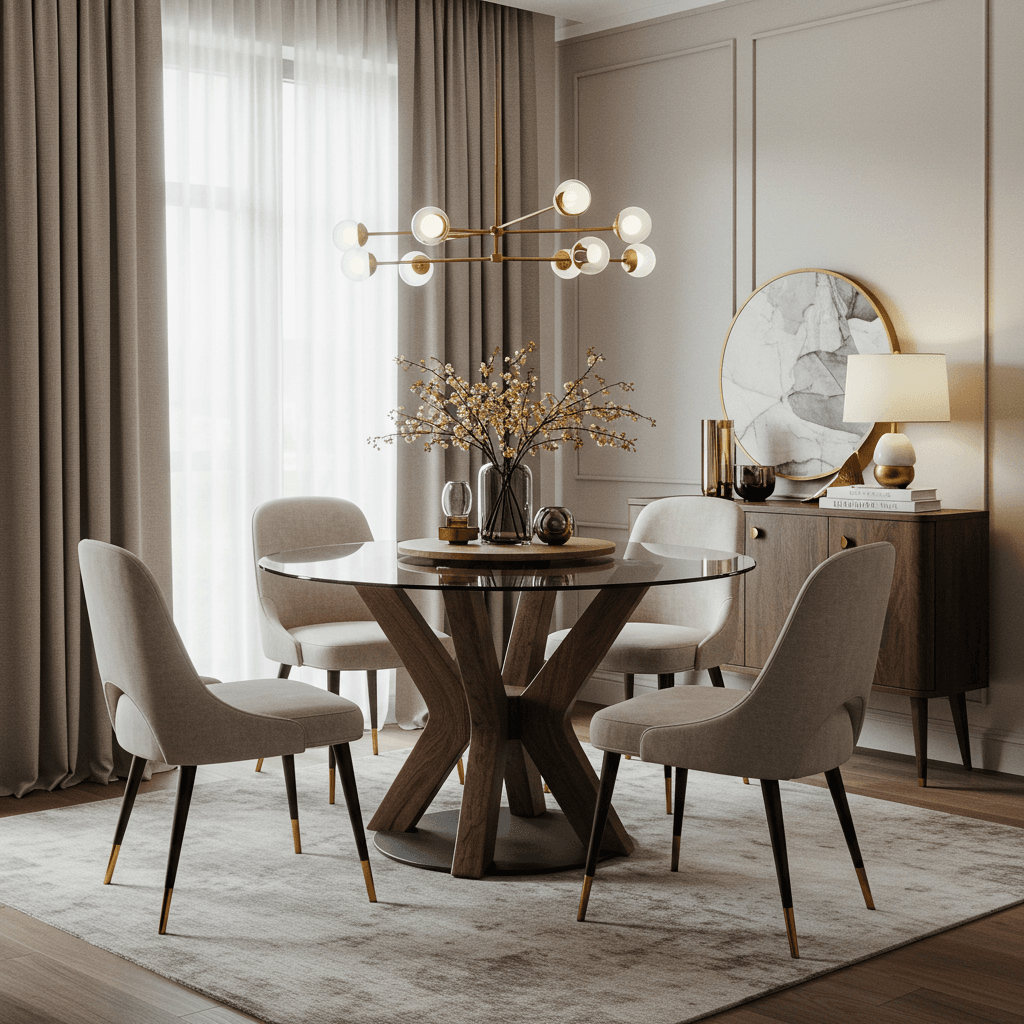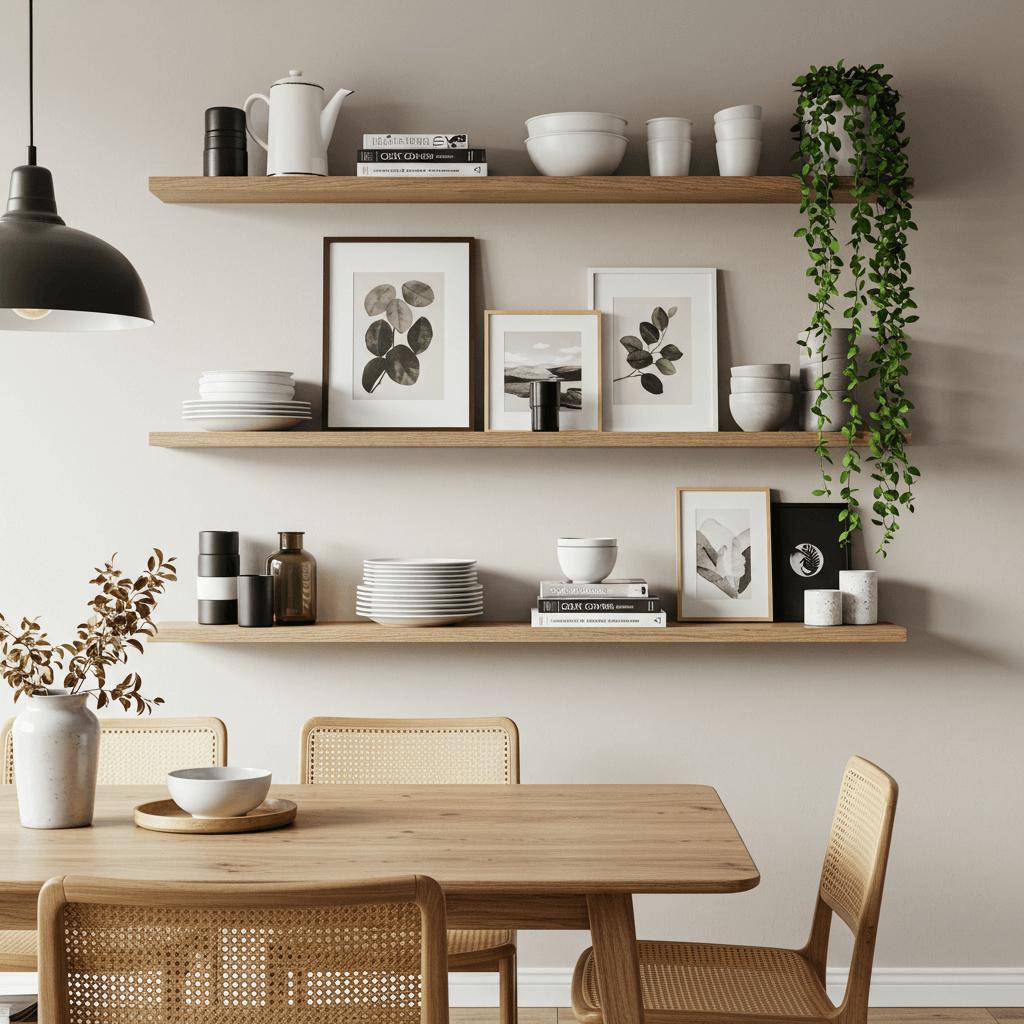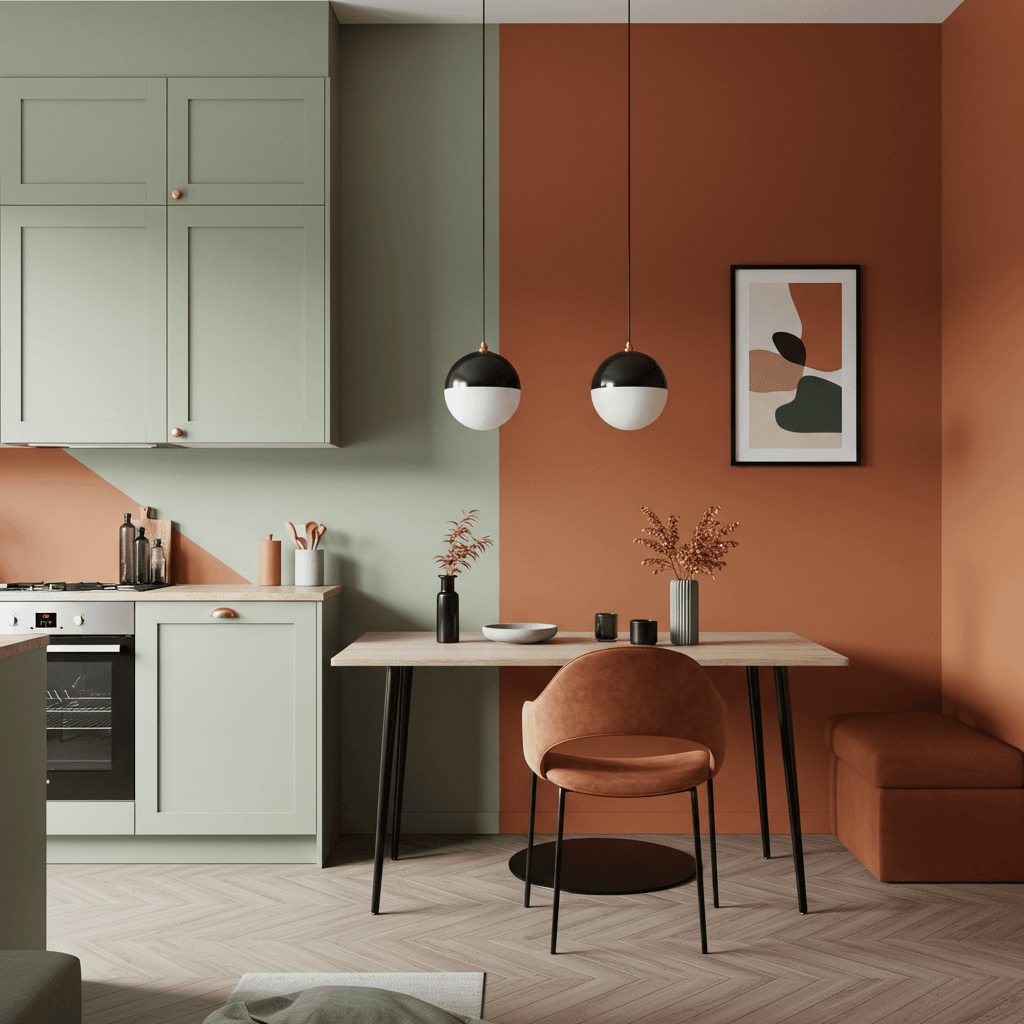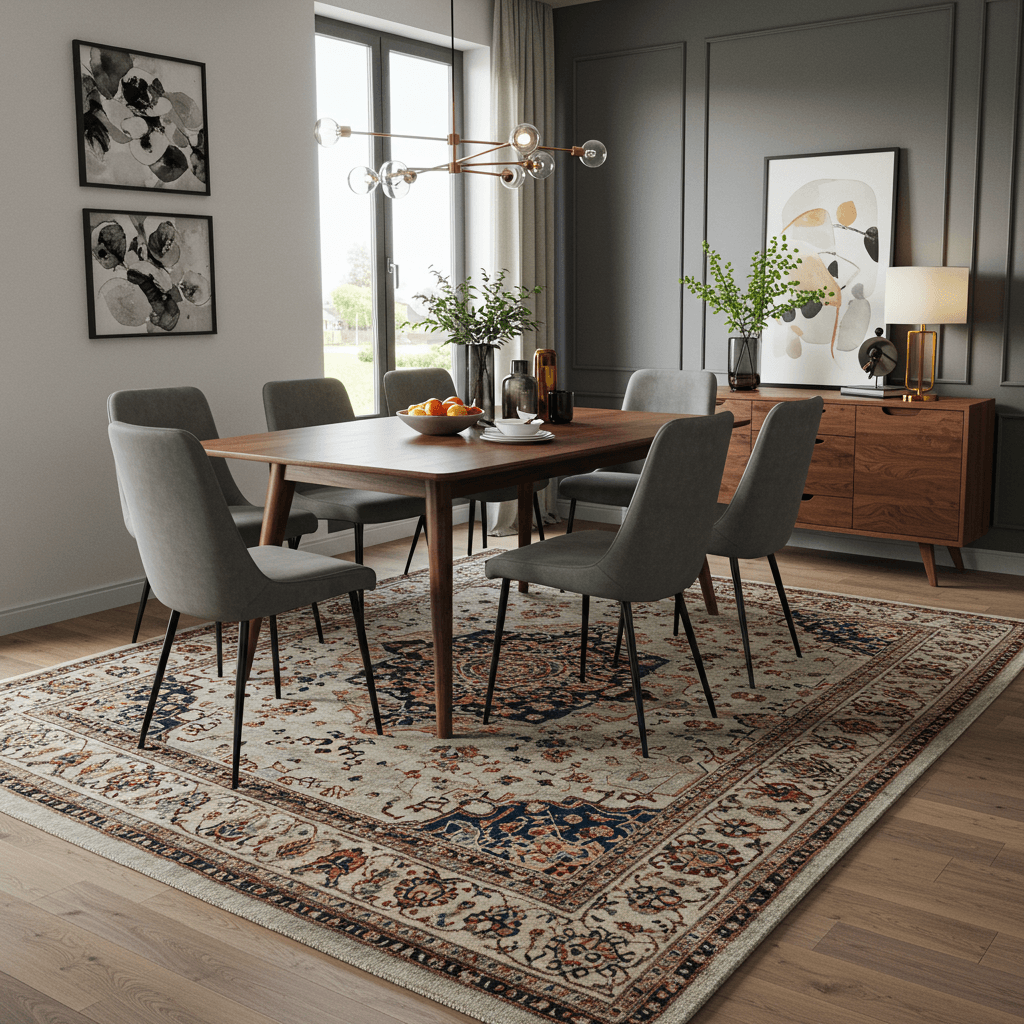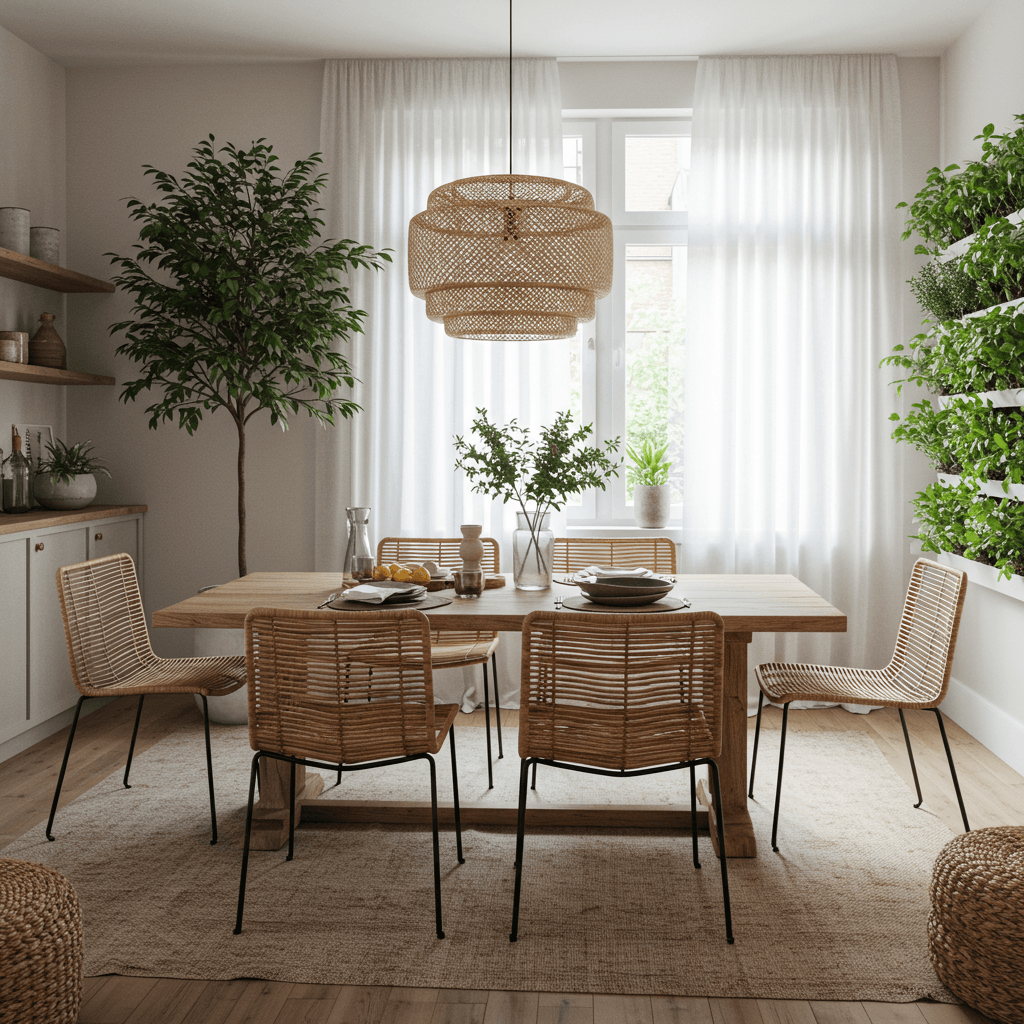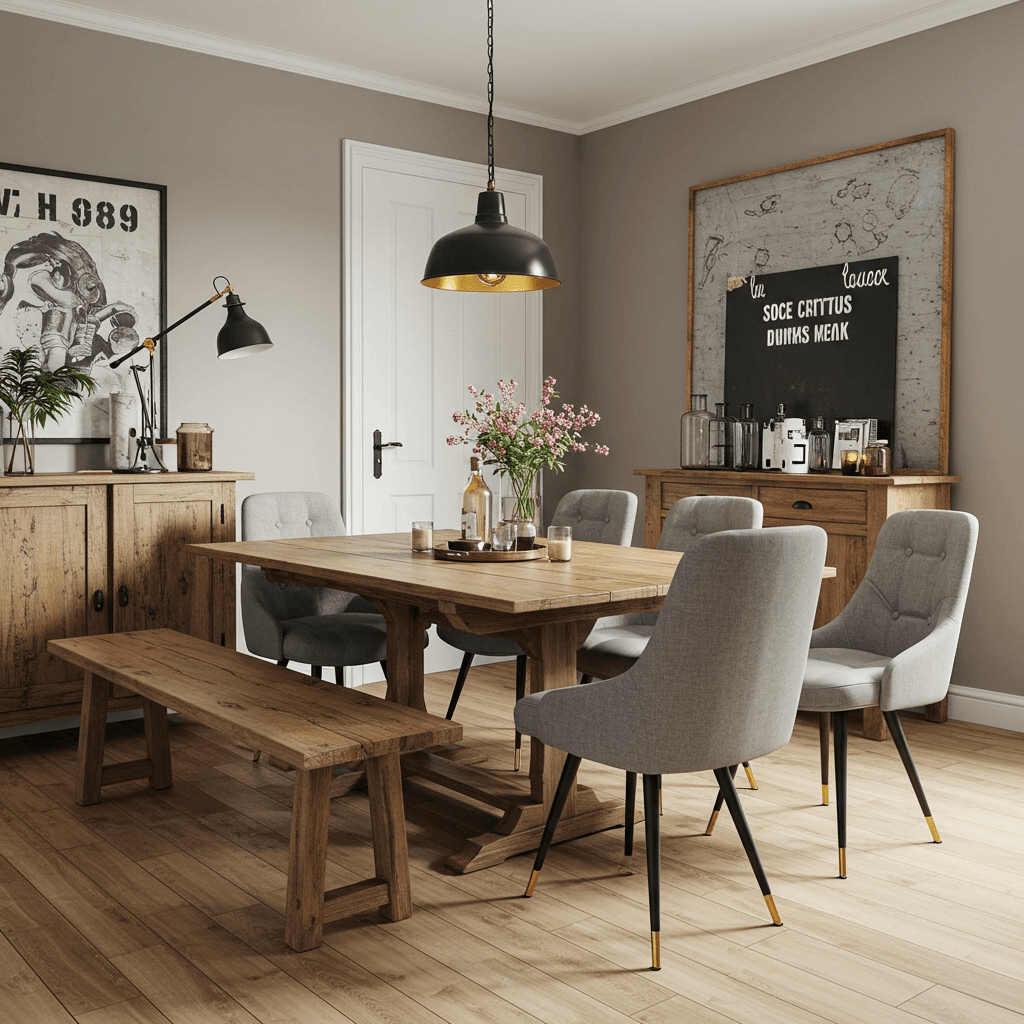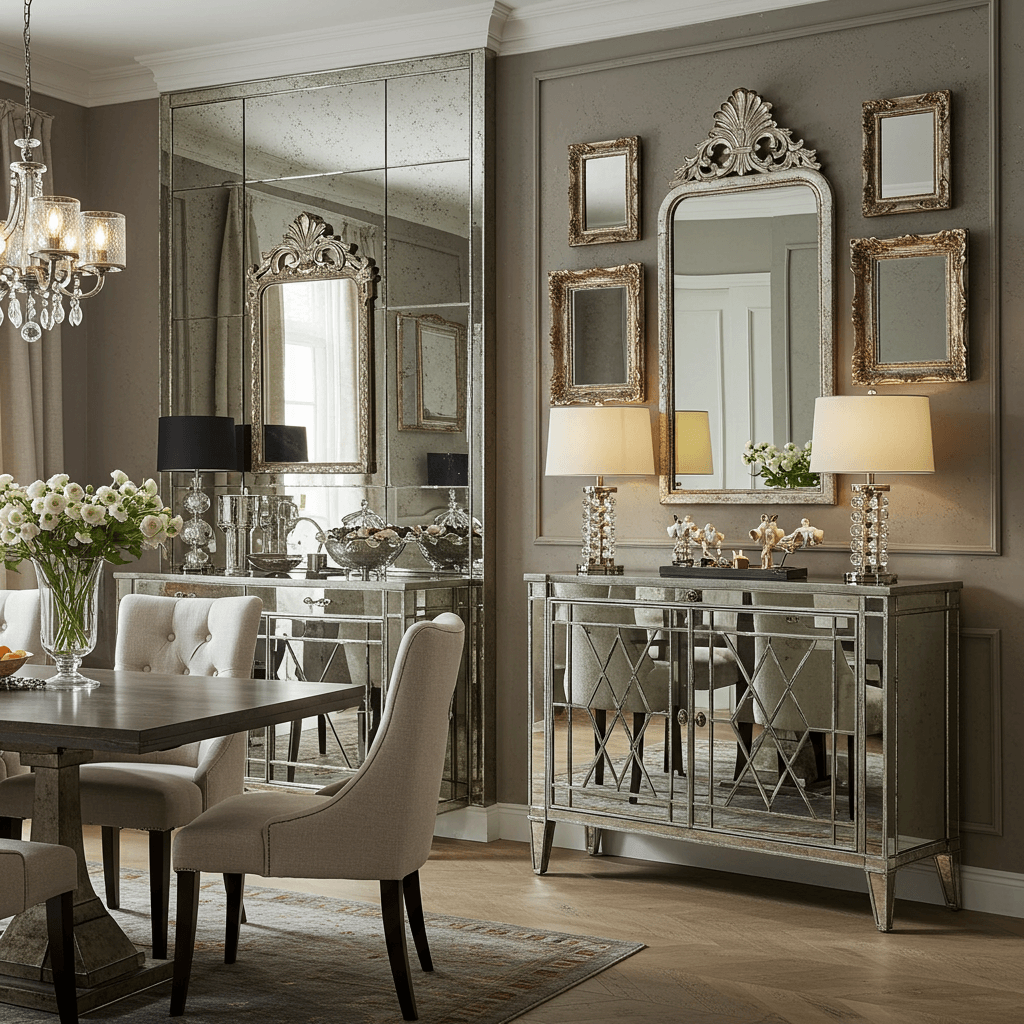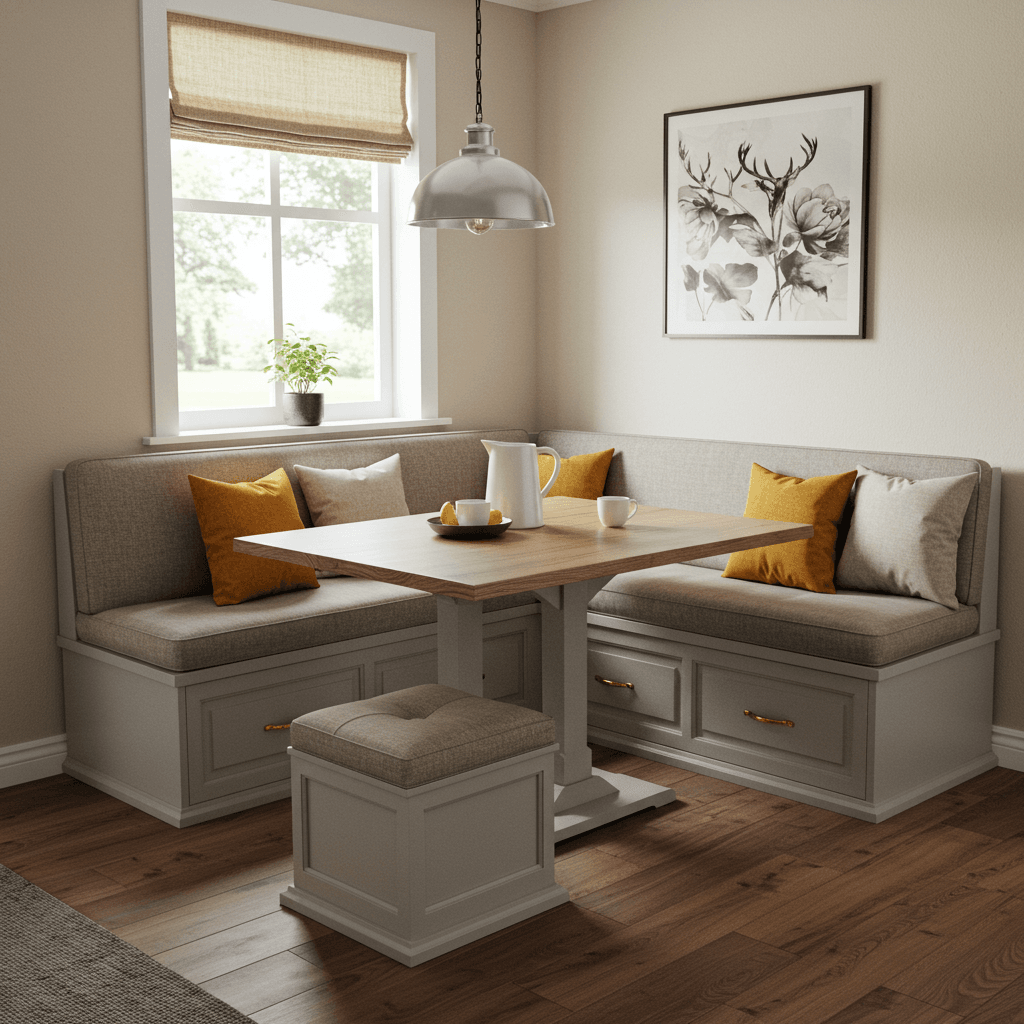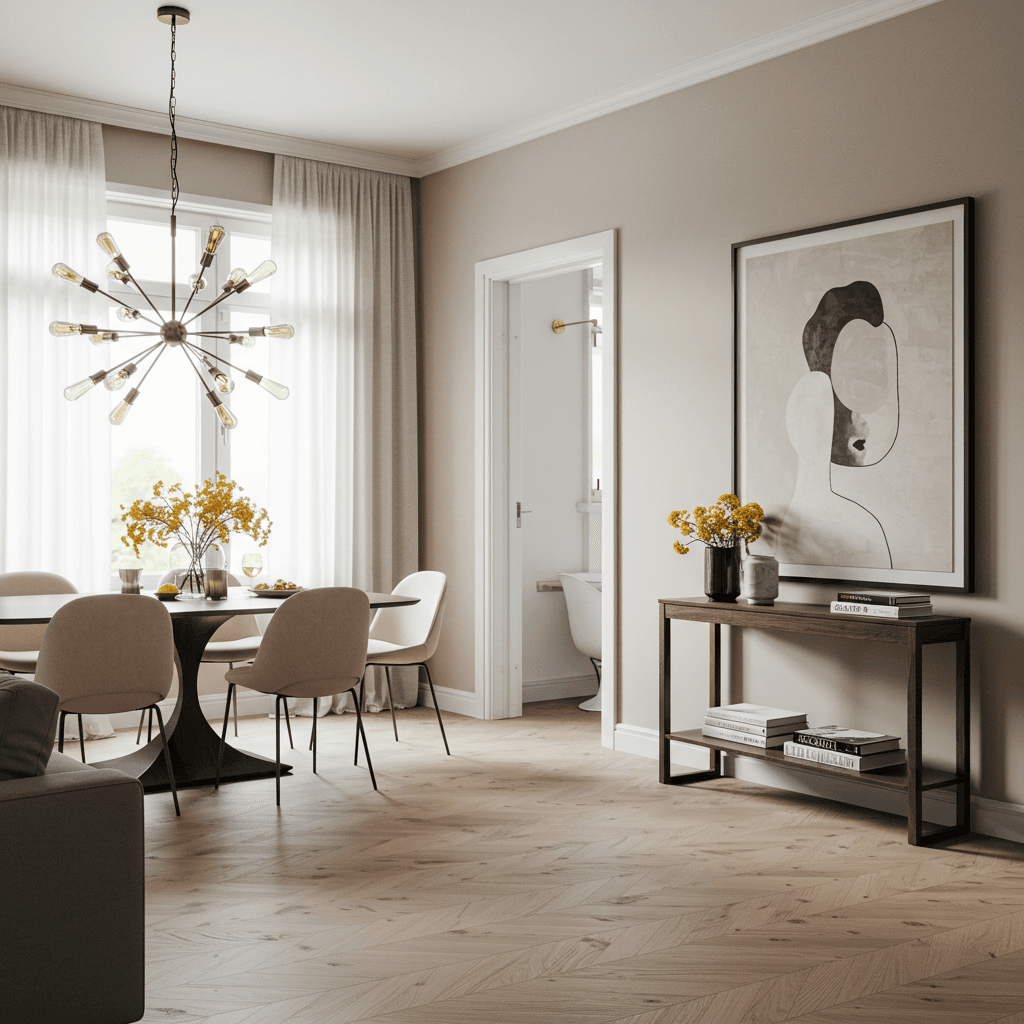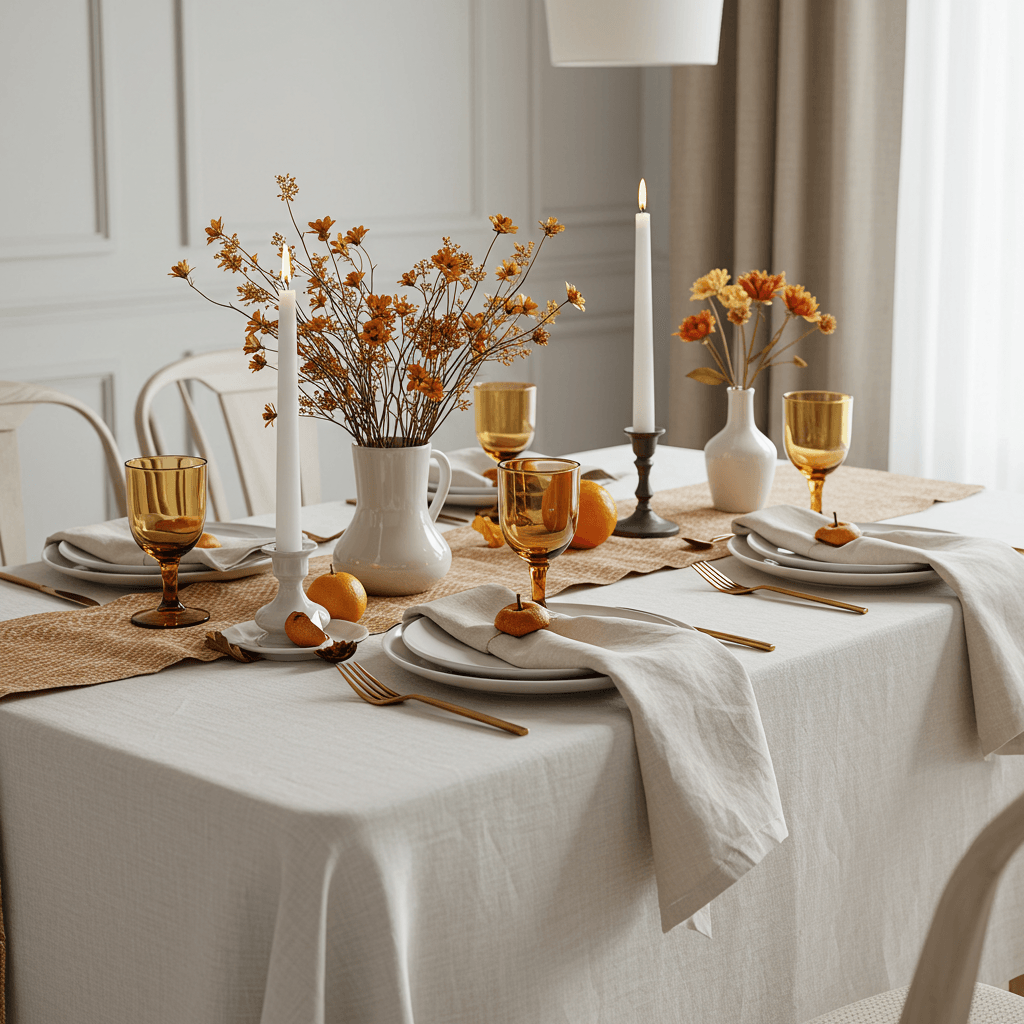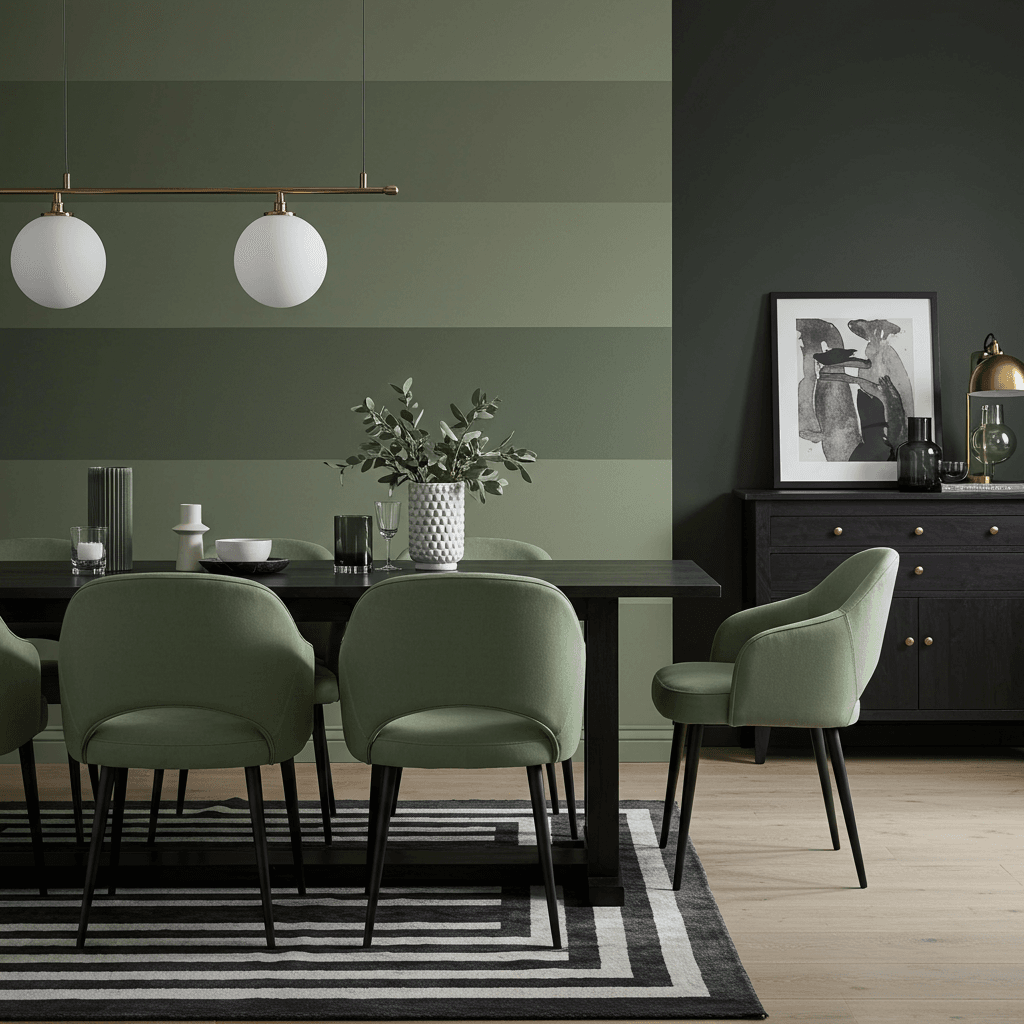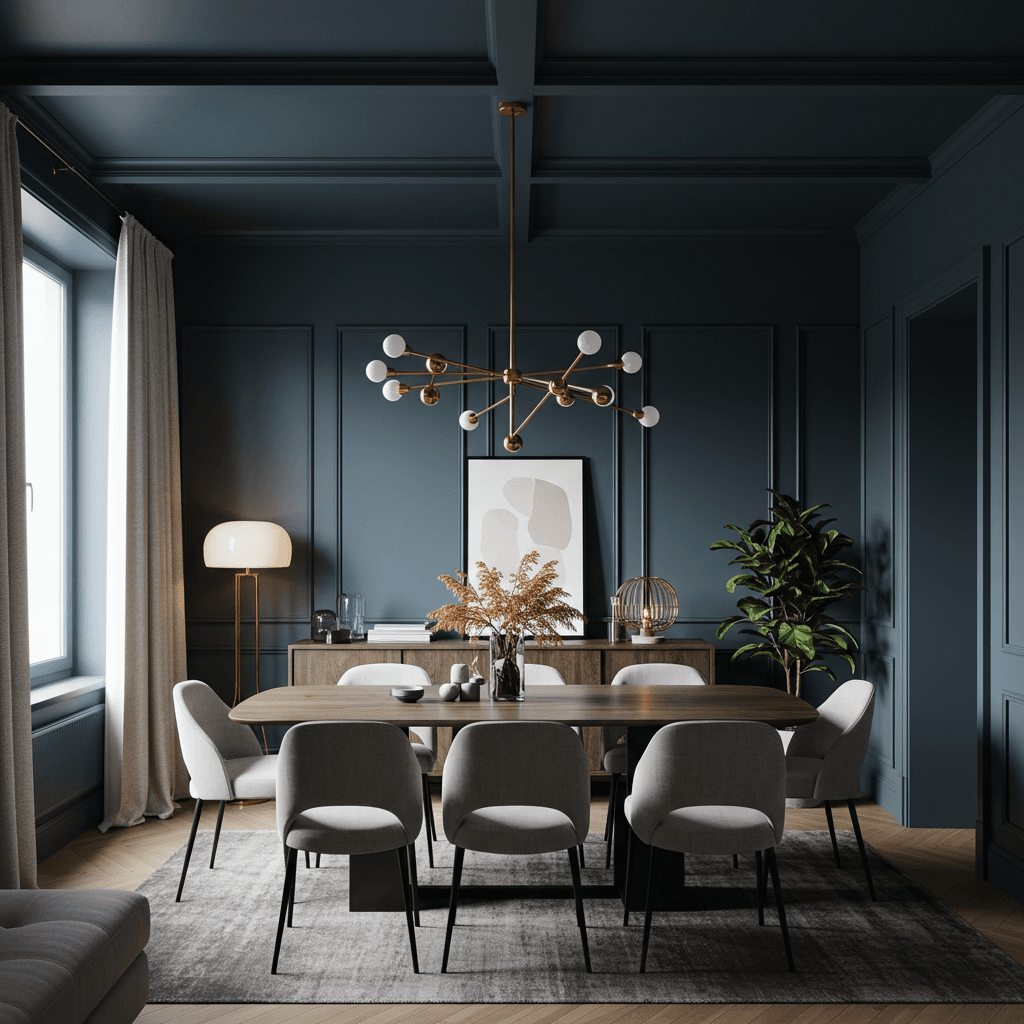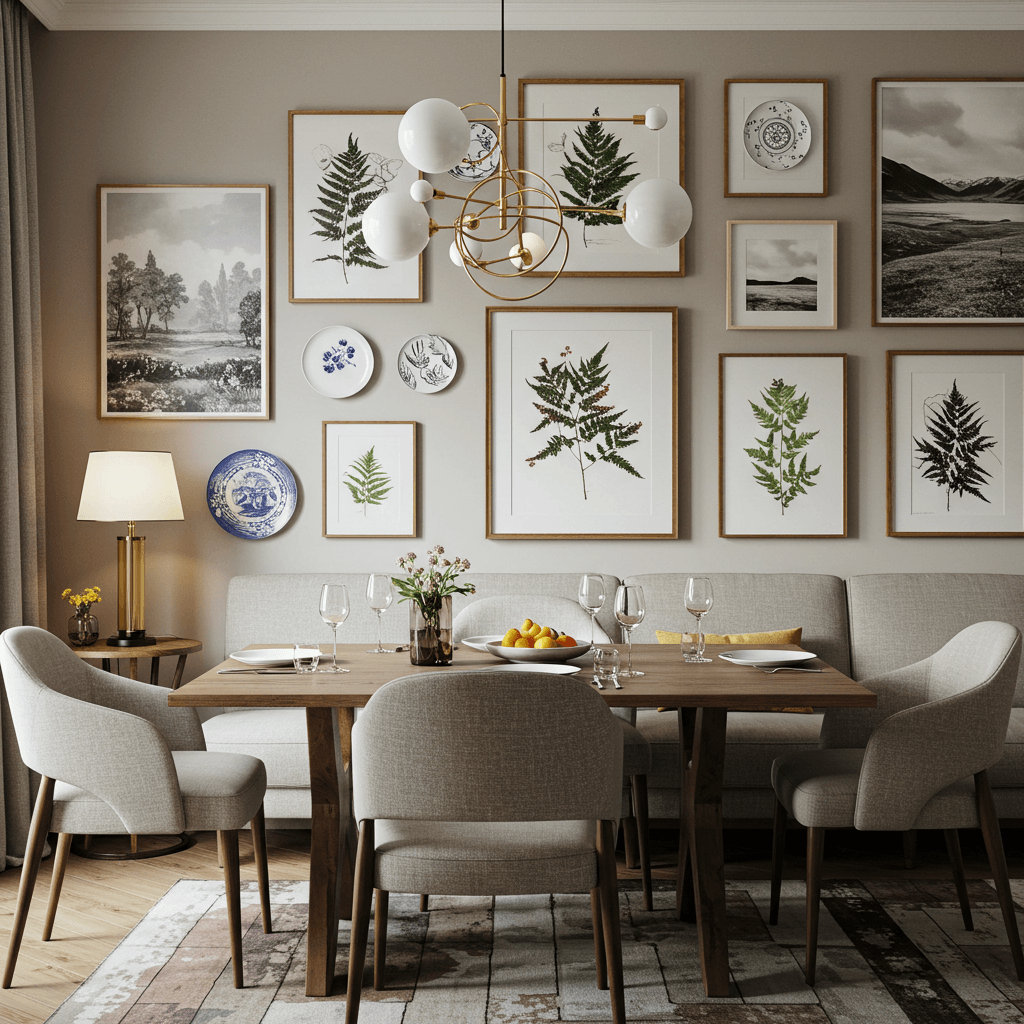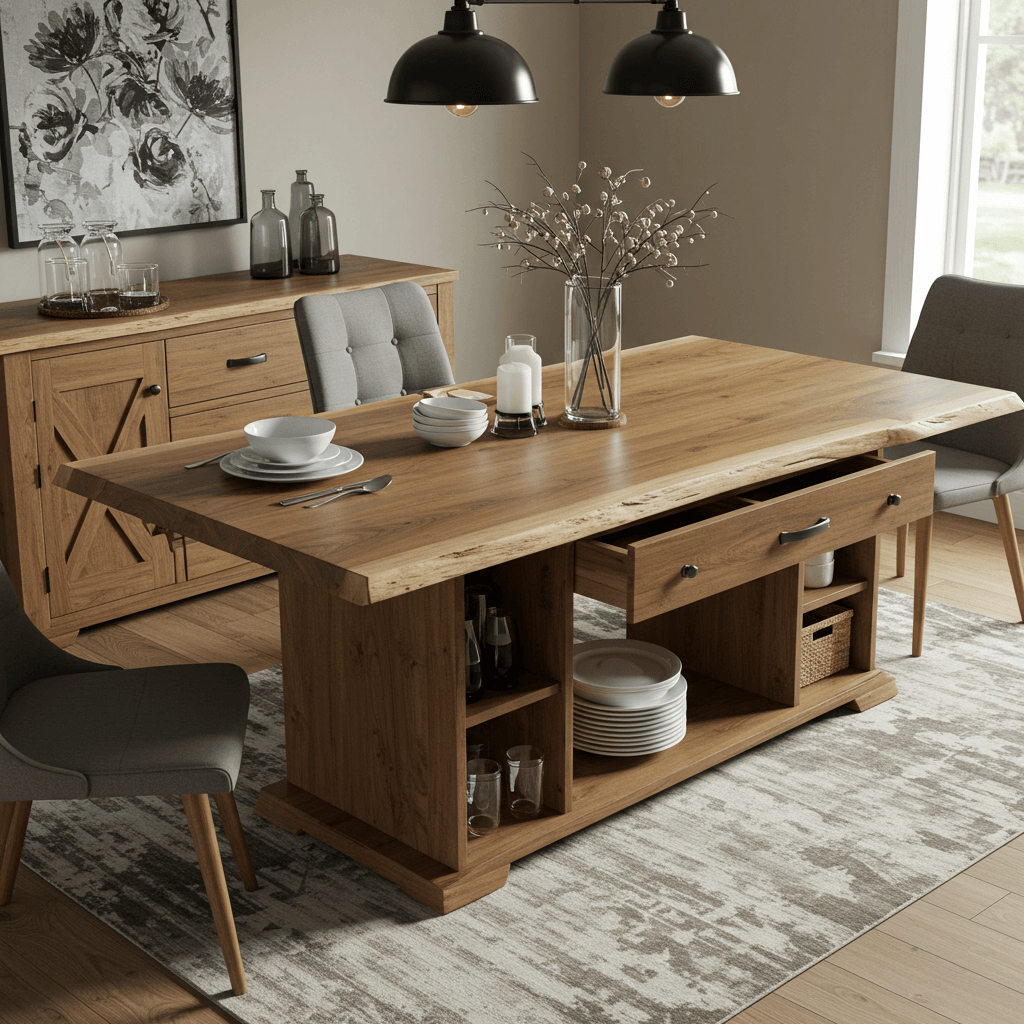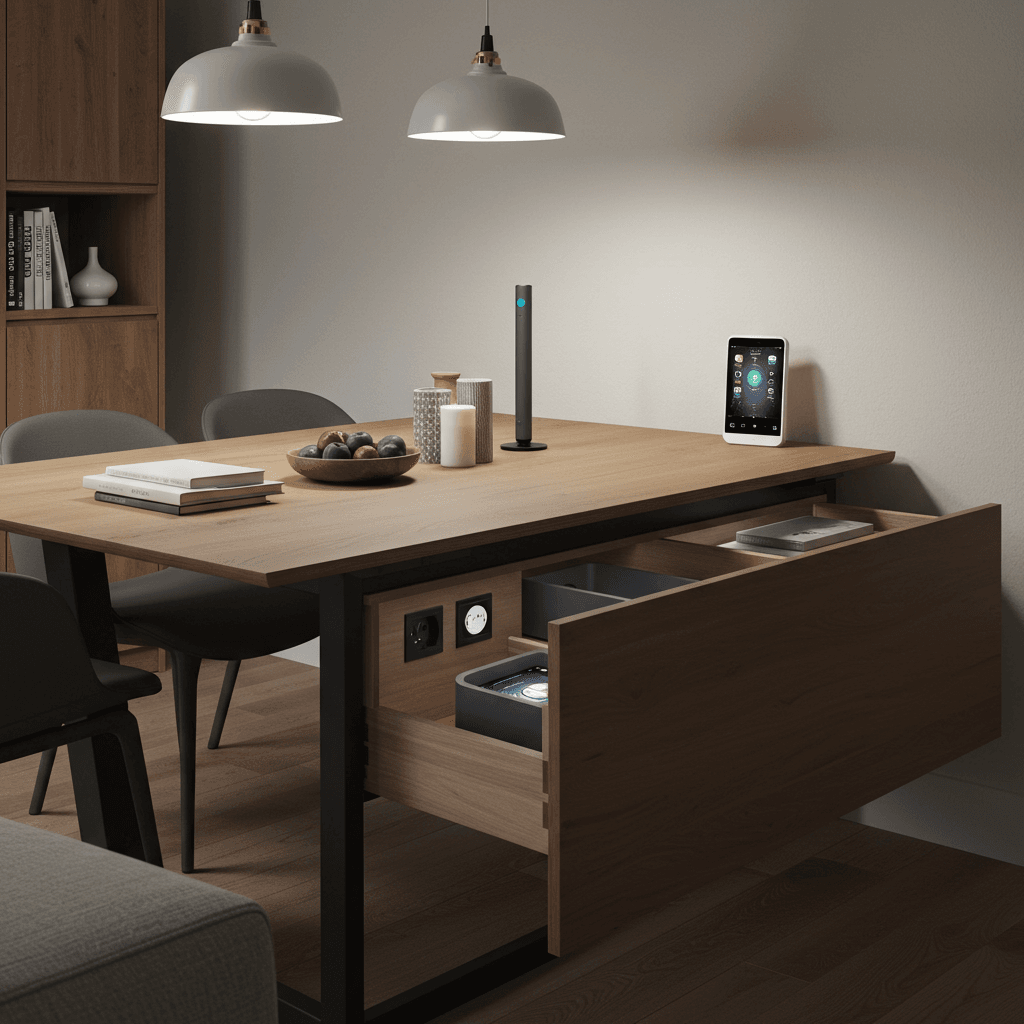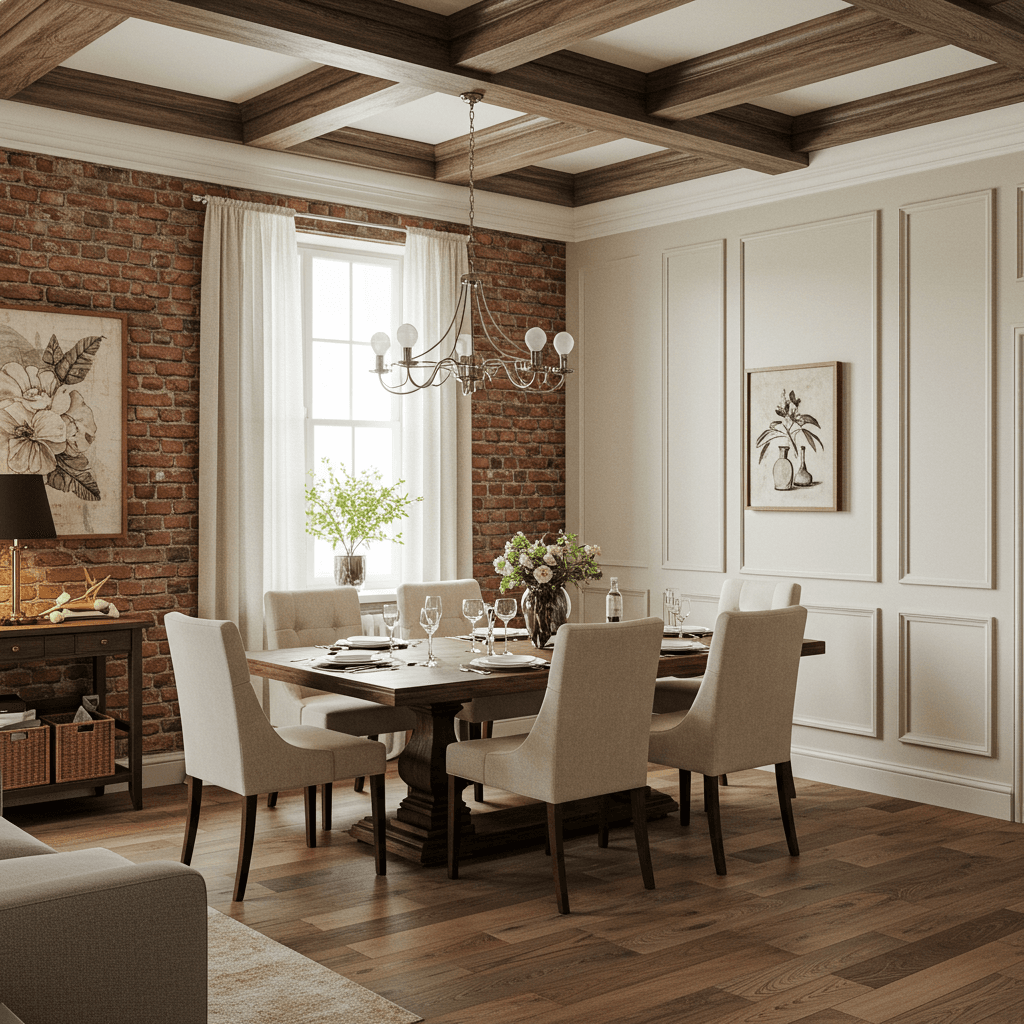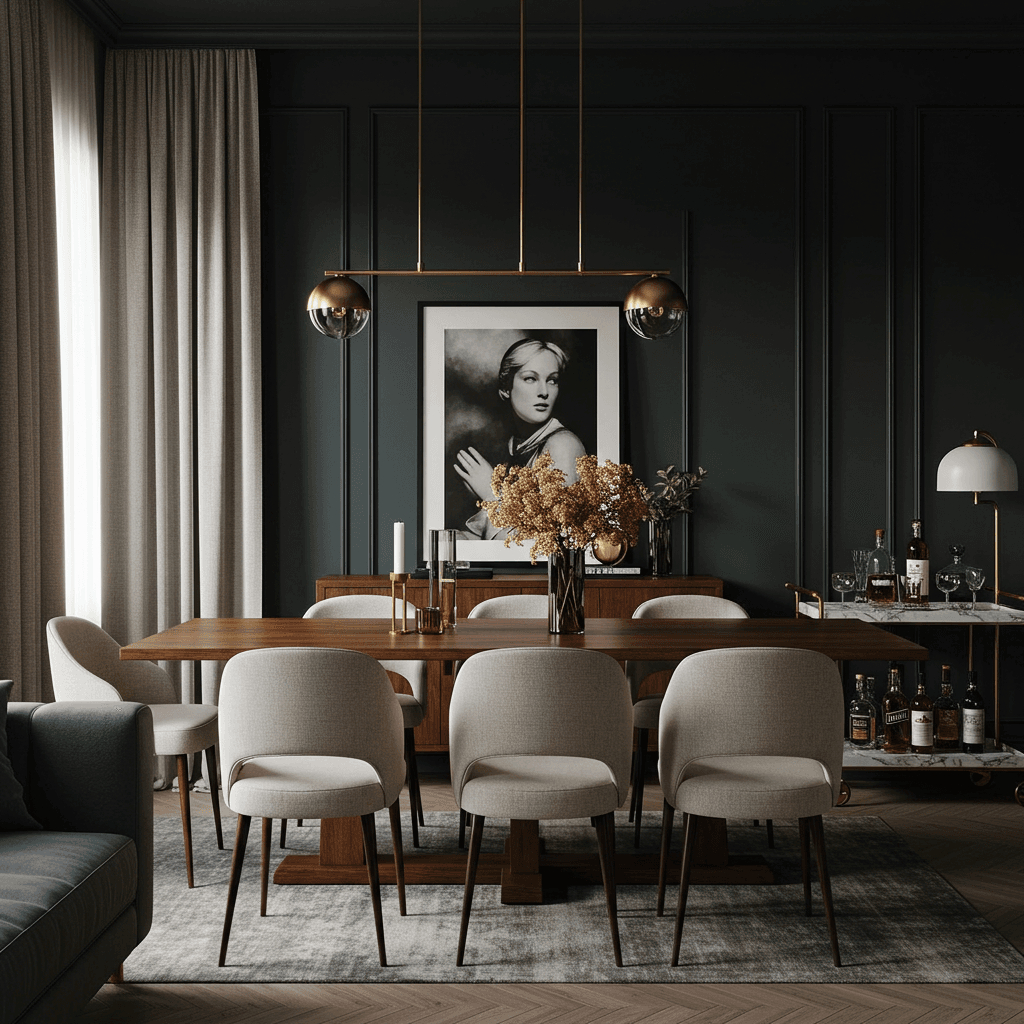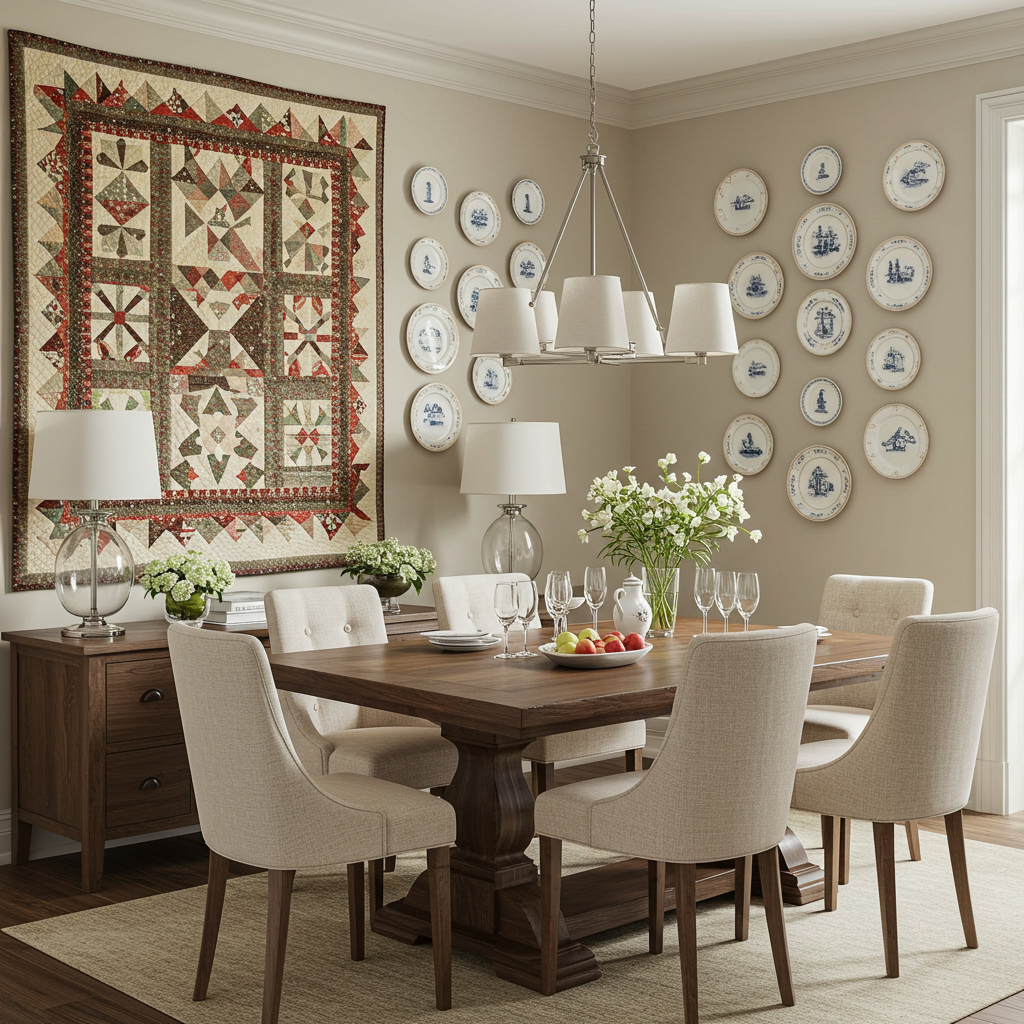Your dining room is more than just a place to eat—it’s a hub for connection, celebration, and creativity. Whether you’re hosting lavish dinner parties or enjoying casual family meals, the right dining room design ideas can transform this space into a stylish, functional sanctuary. From bold color palettes to innovative furniture arrangements, this guide dives into 22 inspiring concepts to elevate your home’s heart. Let’s explore how to blend aesthetics with practicality, ensuring every meal feels like an event.
1. Embrace Bold Wall Treatments
Make a statement with textured wallpaper, wainscoting, or a dramatic accent wall. Deep hues like emerald green or navy blue add sophistication, while geometric patterns inject modern flair. Pair with minimalist decor to let the walls shine. For smaller spaces, opt for vertical stripes to create the illusion of height. This approach not only defines the room’s personality but also sets the tone for memorable gatherings.
2. Layer Lighting for Ambiance
A single overhead fixture rarely does justice to a dining area. Combine chandeliers, pendant lights, and wall sconces to craft layered illumination. Dimmer switches allow you to adjust brightness for intimate dinners or lively brunches. For a contemporary twist, try sculptural lighting pieces in brass or matte black—they double as art while enhancing functionality.
3. Mix Textures for Depth
Smooth marble tables, plush velvet chairs, and rustic jute rugs create a tactile experience that elevates your design. Contrast sleek metals with organic materials like wood or stone to balance modernity and warmth. Textured table linens, such as embroidered runners or linen napkins, add subtle luxury without overwhelming the space.
4. Opt for a Round Table
Round tables foster conversation and work beautifully in compact rooms. Choose a glass-top design to keep the area feeling open, or go bold with a sculptural wooden base. Pair with upholstered chairs for comfort, and add a lazy Susan for practicality during shared meals. This shape softens angular rooms and encourages a cozy, inclusive atmosphere.
5. Incorporate Open Shelving
Display cherished dinnerware, art pieces, or trailing plants on floating shelves. This storage solution keeps essentials accessible while adding visual interest. Style shelves with a mix of heights and textures—stack vintage plates, layer in coffee table books, or place a statement vase. Just avoid clutter to maintain a curated, intentional look.
6. Experiment with Color Blocking
Divide walls or furniture into bold color zones for a dynamic effect. Pair muted tones with vibrant accents—think sage green cabinets against a terracotta wall. Use painter’s tape to create sharp lines or gradient effects. Color blocking works especially well in open-plan spaces, helping the dining area stand out as a distinct zone.
7. Invest in a Statement Rug
A large, patterned rug anchors the dining area and defines the zone, especially in open-concept homes. Choose low-pile options for easy cleaning, or go luxe with a Persian-inspired design for timeless elegance. Layer smaller rugs atop larger ones for added texture. Ensure the rug extends at least 24 inches beyond the table to accommodate pulled-out chairs. This simple addition ties furniture together while softening acoustics during lively meals.
8. Blend Indoor and Outdoor Elements
Incorporate natural materials like rattan chairs, reclaimed wood tables, or potted trees to create a breezy, biophilic vibe. Large windows with sheer curtains maximize natural light, while stoneware dishes or woven placemats reinforce the organic theme. For urban spaces, add a vertical herb garden on a nearby wall—it’s functional and fresh.
9. Mix Chair Styles for Eclectic Charm
Pair a sleek modern table with mismatched chairs—think a bench on one side and upholstered seats on the other. Thrifted vintage chairs can add character, while metallic finishes like brass or copper inject glamour. Keep cohesion by sticking to a shared color palette or material. This approach feels curated rather than chaotic.
10. Add a Mirrored Wall or Accent
Mirrors amplify light and create the illusion of space, ideal for narrow or dim dining rooms. Try a floor-to-ceiling mirrored panel behind a buffet, or hang a collection of antique mirrors for vintage appeal. For subtlety, opt for furniture with mirrored finishes, like a glossy console table or cabinet doors.
11. Create a Multifunctional Banquette
Built-in bench seating with hidden storage saves space and adds cozy charm. Customize with plush cushions in durable fabrics like linen or performance velvet. Pair with a rectangular table for family-friendly meals, and add throw pillows for a pop of color. This setup works perfectly in breakfast nooks or corners.
12. Play with Proportion
Balance oversized art or a sprawling chandelier with sleek, low-profile furniture. A massive pendant light above a petite table creates drama, while a long, narrow console table against a wall offers display space without crowding. Scale elements intentionally to avoid a cluttered feel.
13. Introduce Metallic Accent
Gold, brass, or matte black finishes on hardware, light fixtures, or table legs add polish. Mix metals for depth—pair a bronze chandelier with silver picture frames. Even small touches, like cutlery or candle holders, can elevate the table setting. Just limit metallic elements to 2-3 types for cohesion.
14. Design a Seasonal Tablescape
Rotate centerpieces and linens to reflect the time of year. Autumn calls for dried florals and amber glassware, while spring invites pastel napkins and ceramic bud vases. A neutral base (like a white tablecloth) lets seasonal accents shine without requiring a full redesign.
15. Go Monochromatic with a Twist
Choose a single hue, like sage green or slate gray, and layer varying shades across walls, chairs, and decor. Add contrast with textured black-and-white elements—a striped rug or marble coasters—to keep the palette from feeling flat. This strategy feels cohesive yet dynamic.
16. Install a Statement Ceiling
Draw eyes upward with a painted ceiling in moody navy, soft pink, or metallic gold. Add architectural details like beams, coffered panels, or wallpaper for dimension. Pair with understated furniture to let the overhead design take center stage.
17. Curate a Gallery Wall
Display a mix of framed art, plates, or sculptural objects around the dining area. Use a cohesive theme, such as botanical prints or abstract landscapes, and vary frame sizes for visual rhythm. Hang pieces at eye level when seated to create a connection during meals.
18. Choose a Dual-Purpose Table
Opt for extendable tables with leaves for flexible seating, or use a live-edge slab as both a dining surface and a workspace. Tables with built-in drawers or shelves add hidden storage, perfect for stashing napkins or charger plates.
19. Integrate Smart Technology
Embed outlets in drawers for charging devices discreetly, or install voice-controlled lighting for effortless ambiance. A slim smart speaker tucked into a shelf can stream dinner playlists without cluttering the table. Tech should enhance—not disrupt—the aesthetic.
20. Highlight Architectural Features
Expose brick walls, crown molding, or original hardwood floors to add historic charm. If your space lacks these, create faux beams or install decorative columns. These elements add character and make the room feel intentionally designed.
21. Opt for Dark, Moody Tones
Deep shades like charcoal, burgundy, or forest green create intimacy in large rooms. Pair with warm wood tones and brass accents to prevent the space from feeling cavernous. For balance, incorporate creamy textiles or a marble-topped bar cart.
22. Personalize with Heirloom Pieces
Showcase family quilts as wall art, repurpose grandma’s china as a wall display, or use vintage trunks as sideboards. These items infuse nostalgia and spark conversation, making the room feel uniquely yours.



